Why Is Color Mostly Absent from Cabaret Stages?
On the one hand, the New York cabaret scene is remarkably diverse. It showcases performers brand new to the business, spotlights mature artists of an age rarely featured on stage or screen, and proudly welcomes a rainbow of gender and genre expressions.
On the other hand, cabaret is decidedly monochrome. Cabaret stages and audiences are populated predominantly by white folks. Why is this? What are the ramifications of such racial uniformity? Is anyone doing anything about it? And does the cabaret world present particular challenges to performers of color?
To get some answers, I spoke with four prominent contemporary Black cabaret performers — Natalie Douglas, Aaron Lee Battle, Darius de Haas, and Aisha de Haas. (Darius and Aisha are brother and sister and have separate careers.) I also spoke with cabaret performer Sidney Myer who is the longtime booking manager at Don’t Tell Mama.
Douglas identified several reasons for cabaret’s whiteness. “One is that cabaret is often a nostalgic proposition. I don’t know if you’ve heard the expression ‘history is a whitewash,’ but for many people part of cabaret’s appeal is its throwing back to a gentler, more elegant time, and that version of nostalgia is a white version. Black people don’t long for the 1930s or the 1950s. Those times were not fun for us. Yet thanks to the racism of Hollywood at that time, we have images of nightclubs and elegant townhouses, with Fred Astaire serenading a beautiful lady with a Jerome Kern song. Those are all White images, so when people seek to recreate those nights in their vision for a cabaret evening, they picture something all White,” said Douglas.
Cabaret is decidedly monochrome. Why is this? What are the ramifications of such racial uniformity? Is anyone doing anything about it?
Darius de Haas also sees historical reasons for the Whiteness of cabaret. “You’re catching me just after I fired off a Facebook post in response to all that’s going on right now,” he warned, as we spoke just days after the May 25 killing of George Floyd. “My feeling is that there’s an imbalance in our nation’s history, and that’s going to reflect in every aspect of our social, political, and cultural life. White people have always had more entrée to be able to do what they do. Black people have always had to work much harder and to show beyond 100 percent that we are worthy to do that thing, whatever it may be. There have been cabaret performers of color throughout history, but anyone you would immediately think of — Billie Holiday, Lena Horne, Billy Eckstine — had to come up through pretty extraordinary circumstances to not only establish themselves but also to keep a perpetual presence.”
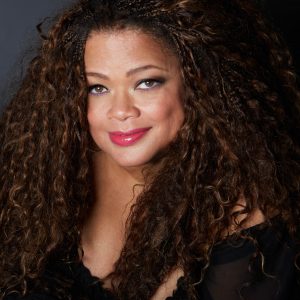
According to Douglas, “We’ve always been here, and we’ve always been making music in the cabaret world. But those weren’t the pictures we saw in the movies or on television. It is only through us making a fuss and saying ‘I need to be represented there, too’ that people will be open to the idea that an evening of cabaret isn’t just pretty white ladies in sparkling gowns.”
Celebrating the 70th anniversary of the 1938 founding of Greenwich Village’s Café Society — the first purposefully integrated nightclub in the U.S. — Douglas created a cabaret show in 2008 honoring the historic venue. “I did a lot of research about why Barney Josephson decided to found it and why Billie Holiday decided to come off the road to perform there. That’s the place where she first sang ‘Strange Fruit,’ and he’s the person who brought the song to her. He was a shoe salesman from New Jersey. On buying trips to Europe, he fell in love with the art form of cabaret — particularly the political bent of Germany’s cabaret scene. When he returned to New York and started going to cabarets here, politics wasn’t part of the repertoire. He wanted to create a place where that was the bill of fare every night. And he did.”
However, Douglas remarked, “Because America’s history with race is so ugly and fraught, many people don’t think it’s an appropriate topic for entertaining evenings out. There are audiences that love the soul sound or New Orleans jazz, and really love having white artists sing it to them. But the Black artists they love to hear are the dead ones. That’s really painful and infuriating.”
“…as a person of color, at least in America, there was an assumption that you would sing jazz.” –Aaron Lee Battle
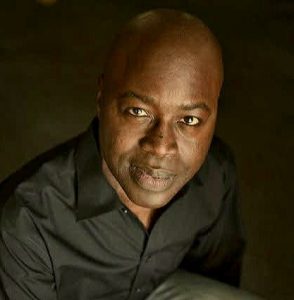
Racial associations with certain kinds of music may also play a role in explaining the “whiteness” of cabaret, where standards from the American Songbook have historically constituted the core of the repertoire. Though Battle is a versatile performer who has sung everything from classical to musical theatre to pop, he prefers to sing standards but found that “as a person of color, at least in America, there was an assumption that you would sing jazz. And if that’s not what you do, you might be turned off to doing a cabaret show. Jazz singers will sometimes tell cabaret singers who try to sing jazz that they’re not really jazz singers. So it can all become something that you want to hide from. Of course, standards were sung by everyone, pop singers and jazz singers, so you may sing a standard in a jazzy sort of way in the cabaret world, though in the jazz world that really doesn’t work,” explained Battle.
After winning his Bistro Award in 1996, Battle experienced what he called an “an elevation” in his career, which he attributes in large part to support from cabaret critics Martin Schaeffer and Roy Sander. “They were amazing with me and pushed very hard for me to be seen and to let people know I was out there,” Battle said. “At that time, having the press or someone in the cabaret world on your side was very important, and for a person of color that doesn’t happen often. It’s a very white genre. If you don’t have somebody to introduce you into cabaret, you don’t find it, you don’t know about it, and you don’t do it. And because what you see out there is basically all white, you think, ‘I can’t get into that, that’s not going to happen for me.’ Like with anything, if you’re not seeing yourself, you think, “‘I’m probably not right for that’.”
While the whiteness of cabaret may be obvious to performers of color, Douglas discovered that, to some white people, the problem is invisible. “Some years ago, a critic I adore wrote a year-end wrap-up in which he listed his top 10 classic cabaret artists and his top 10 current favorite cabaret artists,” Douglas explained. “Of his top 10 classic ones, eight or nine were people of color. Yet his list of current artists was all white. It shocked me to see it so starkly, and to recognize that he didn’t see it. I cannot tell you how many times things like that have happened, when I have to be the person to write someone a private message saying ‘Hey, I assume you haven’t noticed this.’”
Douglas also tells of a cabaret-artist friend of hers who once wrote a piece complaining that TV’s American Idol and The Voice weren’t paying proper respect to traditional popular music forms. Then, in recommending they hire as judges some of New York’s great cabaret stars, she suggested a list of artists, all of whom were white.
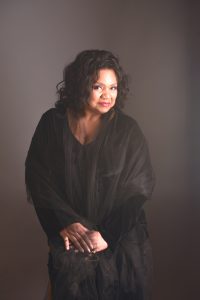
Aisha de Haas, whose parents were jazz musicians, attributes the lack of racial diversity in part to the limited music curriculum in urban public schools. “My public elementary school didn’t have any music program at all,” she recalled. “When you’re young and your school doesn’t have a program and maybe you’ve come into loving music on your own and what you hear is only the latest music of the day, you feel that’s the only market for you. The art of cabaret is certainly not taught in urban public schools. I was fortunate that I grew up in a house where I was exposed to it.”
Ironically, as Myer points out, one of today’s most prestigious organization championing cabaret, The Mabel Mercer Foundation, is named for an African-American performer. “Cabaret has always had prominent Black performers,” Myer explained, naming Eartha Kitt, Alberta Hunter, André De Shields, among numerous others. “There are many pioneers, ancestors in this cabaret world that performers of color can point to. It’s not like somebody has to break through.”
Nonetheless, while there have always been these exceptional artists, the number of performers of color working in cabaret is small. Myer admits that while cabaret may not be the arena in which young performers of color want to build their careers, in the past they might have chosen cabaret as a starting place to showcase their talents before moving into something else, such as Broadway, film, or television. “But now that opportunities for people of color in all of those other areas have increased dramatically, young performers can head there directly. Years ago, cabaret was one of the only doors open for black performers to get noticed. Things were very closed to them in the other media, but now that’s not so much the case.”
“I’m often faced with the choice of whether or not to call someone’s attention to the racial ‘optics’ of a situation.” –Natalie Douglas
In essence, cabaret involves solo performers in intimate spaces sharing personal perspectives through song interpretation. “Regardless of what a performer’s talent is, cabaret is primarily about the performer’s point of view,” said Myer. So if the viewpoints of one group of people are grossly under-represented, the art form has a problem. If the voices, figuratively and literally, of performers of color are absent from the cabaret stage, an essential part of the conversation is missing.
“When you present an evening that is all white [songwriters], you’re denying the reality around you,” said Douglas. “In the American Songbook, there’s plenty that was written by Black people, and plenty that was stolen from Black people. So to take those songs and only give them to white artists to sing is one of the worst kinds of cultural appropriation.”
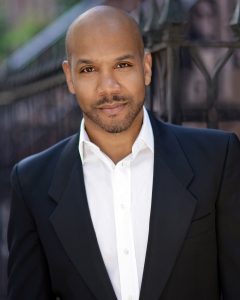
According to Darius de Haas, performers of color benefit meaningfully from seeing “themselves” both on and off stage in cabaret spaces. “It’s always been important for Black performers to have their tribe,” he explained. “It was so heartwarming for me, when I first moved to New York back in 1990, and the first person I saw in a cabaret show was Eartha Kitt, at the Ballroom. Her musical director [Daryl Waters] was a very serious, studious, young Black man with these little glasses and an Afro, and that made a great impression on me. It was wonderful to see ‘me,’ in a way, reflected up there. And even though the audience was primarily white people —and me, spending money I didn’t have — there were all these great performers of color who came to watch her perform. A lot of them came from the musical revue Black and Blue that was playing on Broadway at the time, and that made me so proud.”
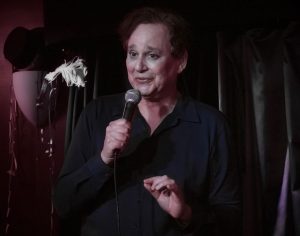
Myer said that “the door has always been open for people of color to come in to cabaret,” though he recognizes that there is little being done to usher them in. Douglas recalled that when KT Sullivan was appointed artistic director of The Mabel Mercer Foundation in 2012, “she said that she was planning to make an effort to see to it that there were more people of color in the audience and onstage. And she really has. If you look at the roster of the organization’s cabaret conventions every year since she’s taken over, it’s much more diverse than it used to be. Also, I’m a master teacher for the Foundation and for the last six years I have not taught a single class that was all-white.”
In her work as a performer, Douglas strives to bring attention to issues of inclusivity with her “Freedom Songs” show, illuminating the Civil Rights, Women’s Rights, and Queer Rights movements and songs tied to them. She has presented segments of the show in private high schools as part of diversity education programs.
Taking a more indirect approach, Aisha de Haas doesn’t typically address racial issues head-on in her performances. “There are so many other stories that I want to tell. And sometimes for me the music is a way of getting outside all of that,” she explained. “I don’t always want to be mad onstage, but that doesn’t mean that the events of the day don’t influence my choices. I don’t sing protest songs or anything like that, but I do sometimes choose songs that have a particular message if it pertains to current events.”
In developing his “Gentlemen of Jazz” cabaret show, which focuses on the work of such musicians as Nat King Cole, Billy Eckstine, and Al Jarreau, Battle felt it necessary to provide racial context. “I talk about their lives as touring celebrities and what happened to their careers because of racism — how Eckstine lost a TV show contract because of photos that were taken of him signing autographs for white girls, and how Cole almost got kidnapped by the KKK when he was onstage singing. If you’re going to talk or sing about a performer, you have to talk about all of it. It’s important for people to understand it all.”
If the voices, figuratively and literally, of performers of color are absent from the cabaret stage, an essential part of the conversation is missing.
Since times have changed, due to Civil Rights legislation and the like, do performers of color still face challenges in the cabaret world? “Oh god, yes. Absolutely,” said Douglas, who continues to see a blatant lack of inclusivity in rosters of performers. “I’m often faced with the choice of whether or not to call someone’s attention to the racial ‘optics’ of a situation. Some people respond with a ‘thank you, I didn’t see that, I’m glad you told me,’ while others may say those same words and never hire me again. So I’m always in the position of having to make a decision that I know may cost me. For my white colleagues, they also have to choose whether or not to say something, but the consequences aren’t the same. There are prices to be paid for being the Black person who said something.”
Douglas spent over 15 years enduring the inexplicably racist behavior of an older white man, a stalwart cabaret fan she saw at virtually everyone’s show. Periodically, he would pin her against the wall and sing into her face “Mama’s little baby loves shortnin, shortnin…” and she would struggle to just laugh it off as if it was no big deal. “For many white people, if they don’t see something like what happened the other day — a video of a white man kneeling on a Black man’s neck until he was dead — then they don’t see racism. They don’t recognize the little things,” Douglas said, “which are what really maintain racism on a daily basis.”
What Darius de Haas has found most challenging to endure is the condescension he has experienced from “those white journalists or performers in the cabaret world who want to tell me in a condescending way about the music I’m doing, particularly music of Black writers or performers. It’s a weird kind of entitlement. They seem to feel as though they own it because they know about it, and that I need to be told about it from them.”
Douglas concluded, “We live in a time now that’s exceedingly painful when it comes to race. If you have the choice of closing the door on it for 10 minutes, I understand why you would want to, but the fact is your brothers and sisters of color can’t. We don’t get to close the door on it — ever, not for one minute of our lives.
“When I first started doing cabaret I had some older white artists say, ‘Your voice is beautiful and I love your show, but why do you have to talk about being Black?’ Well, what would you like me to talk about?”
About the Author
Lisa Jo Sagolla is the author of "The Girl Who Fell Down: A Biography of Joan McCracken" and "Rock ‘n’ Roll Dances of the 1950s." A choreographer, critic, and historian, she has written for Back Stage, American Theatre, Film Journal International, and numerous other popular publications, encyclopedias, and scholarly journals. An adjunct professor at Columbia University and Rutgers, she is currently researching a book on the influence of Pennsylvania’s Bucks County on America’s musical theatre.





Lisa Jo … Thank you for writing this excellent piece which is so insightful.
Lisa Jo Sagolla, thanks for these tight and telling insights. Cabaret is art and cabaret is business. You addressed both of these aspects with fairness, direct analysis and valuable quotes from important performers.
Terrific piece, and so important. Thank you!